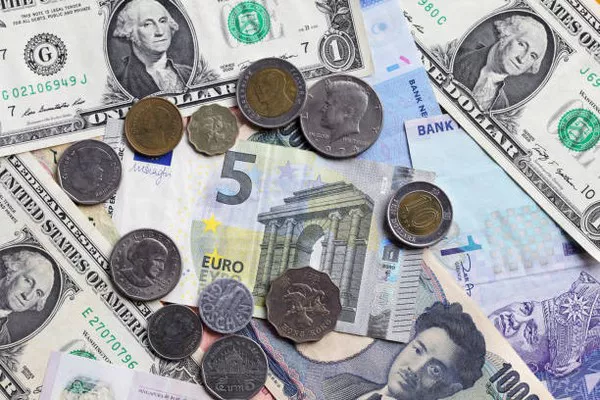Japan’s currency is not only a medium of exchange but also a reflection of its rich cultural heritage and economic significance. Among the various denominations, the 10,000 yen bill stands out as a symbol of prosperity and prestige. In this article, we delve into the story behind the 10,000 yen bill, examining its design, historical context, and impact on Japanese society.
A Glimpse into History: The Evolution of Japanese Currency
Japan’s monetary system has undergone significant transformations over the centuries, with each era leaving its mark on the nation’s currency.
Feudal Japan: Barter and Commodities
In feudal Japan, currency as we know it today was virtually nonexistent. Instead, people relied on a barter system and traded goods and commodities such as rice, silk, and precious metals. The concept of standardized currency began to emerge during the Edo period (1603-1868), with the introduction of copper coins and gold and silver “obans” for larger transactions.
Meiji Restoration: Modernization and Westernization
The Meiji Restoration of the late 19th century ushered in a new era of modernization and Westernization in Japan. As part of the government’s efforts to centralize and stabilize the economy, a modern currency system was introduced, with the yen established as the official unit of currency. The 10,000 yen bill was among the denominations introduced during this period, symbolizing Japan’s transition to a modern industrialized nation.
Design and Symbolism: Deciphering the 10,000 Yen Bill
The design of the 10,000 yen bill is a testament to Japan’s rich cultural heritage and economic achievements, incorporating elements of tradition, innovation, and national pride.
Front Side: Portrait of Yukichi Fukuzawa
The front side of the 10,000 yen bill features a portrait of Yukichi Fukuzawa, a prominent figure in Japanese history known for his contributions to education, literature, and social reform. Fukuzawa founded Keio University and played a pivotal role in Japan’s modernization efforts during the Meiji period.
Back Side: Phoenix Hall of Byodoin Temple
The reverse side of the 10,000 yen bill showcases the Phoenix Hall of Byodoin Temple, a UNESCO World Heritage Site located in Uji, Kyoto Prefecture. Built in the 11th century, the Phoenix Hall is celebrated for its architectural beauty and historical significance, serving as a symbol of Japan’s cultural heritage and artistic prowess.
Security Features: Safeguarding Against Counterfeiting
As the highest denomination in Japan, the 10,000 yen bill incorporates advanced security features to prevent counterfeiting and ensure the integrity of the currency.
Microprinting and Intaglio Printing
Microprinting, or the printing of tiny text and intricate patterns, is used on various elements of the bill, including the portrait of Yukichi Fukuzawa and the denomination numeral. Intaglio printing, a technique that creates raised surfaces on the paper, enhances the tactile feel of the bill and provides additional security against reproduction.
Security Threads and Watermarks
Embedded security threads and watermarks are integrated into the paper substrate of the bill, making it difficult to replicate and enhancing its authenticity. These covert features are visible under ultraviolet light and serve as key indicators of a genuine 10,000 yen bill.
Color-Shifting Ink and Holograms
Color-shifting ink and holographic elements are incorporated into the design of the bill, creating dynamic visual effects that are virtually impossible to reproduce with standard printing methods. These features not only enhance the bill’s aesthetic appeal but also deter counterfeiters.
Cultural Significance: Beyond Monetary Value
The 10,000 yen bill holds symbolic significance beyond its monetary value, representing Japan’s cultural heritage, economic prosperity, and commitment to excellence.
Prestige and Status
As the highest denomination in Japan, the 10,000 yen bill is associated with prestige and status, often reserved for special occasions and larger transactions. Its circulation reflects Japan’s position as a leading economic power and a hub of innovation and creativity.
Art and Architecture
The imagery featured on the 10,000 yen bill, including the portrait of Yukichi Fukuzawa and the Phoenix Hall of Byodoin Temple, celebrates Japan’s artistic and architectural achievements. These iconic landmarks serve as reminders of the nation’s rich cultural legacy and timeless beauty.
Education and Enlightenment
The inclusion of historical figures such as Yukichi Fukuzawa on the 10,000 yen bill promotes education and enlightenment, encouraging people to learn about Japan’s history, culture, and contributions to the world.
Conclusion
The 10,000 yen bill embodies Japan’s storied past, dynamic present, and promising future. Through its design, symbolism, and security features, it serves as a tangible symbol of Japan’s cultural heritage, economic prosperity, and commitment to excellence.
FAQs
Is the 10,000 yen bill commonly used in everyday transactions?
While the 10,000 yen bill is widely accepted for larger transactions and special occasions, smaller denominations are more commonly used for everyday purchases.
Are there any restrictions on exchanging 10,000 yen bills for smaller denominations?
Banks and financial institutions typically accept 10,000 yen bills for exchange into smaller denominations, although they may impose limits or fees depending on their policies.
Is the 10,000 yen bill prone to counterfeiting?
Counterfeit incidents involving the 10,000 yen bill are relatively rare, thanks to its advanced security features. However, vigilance and awareness are essential in detecting counterfeit currency.
Can I use the 10,000 yen bill for international transactions?
While the 10,000 yen bill is legal tender in Japan, it may not be accepted for transactions outside the country. It’s advisable to exchange it for local currency before traveling abroad.
Are there any cultural customs or superstitions associated with the 10,000 yen bill?
In Japanese culture, giving a gift or monetary contribution in multiples of 10,000 yen is considered auspicious, symbolizing prosperity and good fortune.


